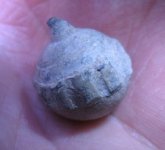jayreef
Elite Member
Hi again guys
I do not suppose anyone has pictures of a musket ball with rifling to compare
I would love to see them as google does not turn up anything
I do not suppose anyone has pictures of a musket ball with rifling to compare
I would love to see them as google does not turn up anything








